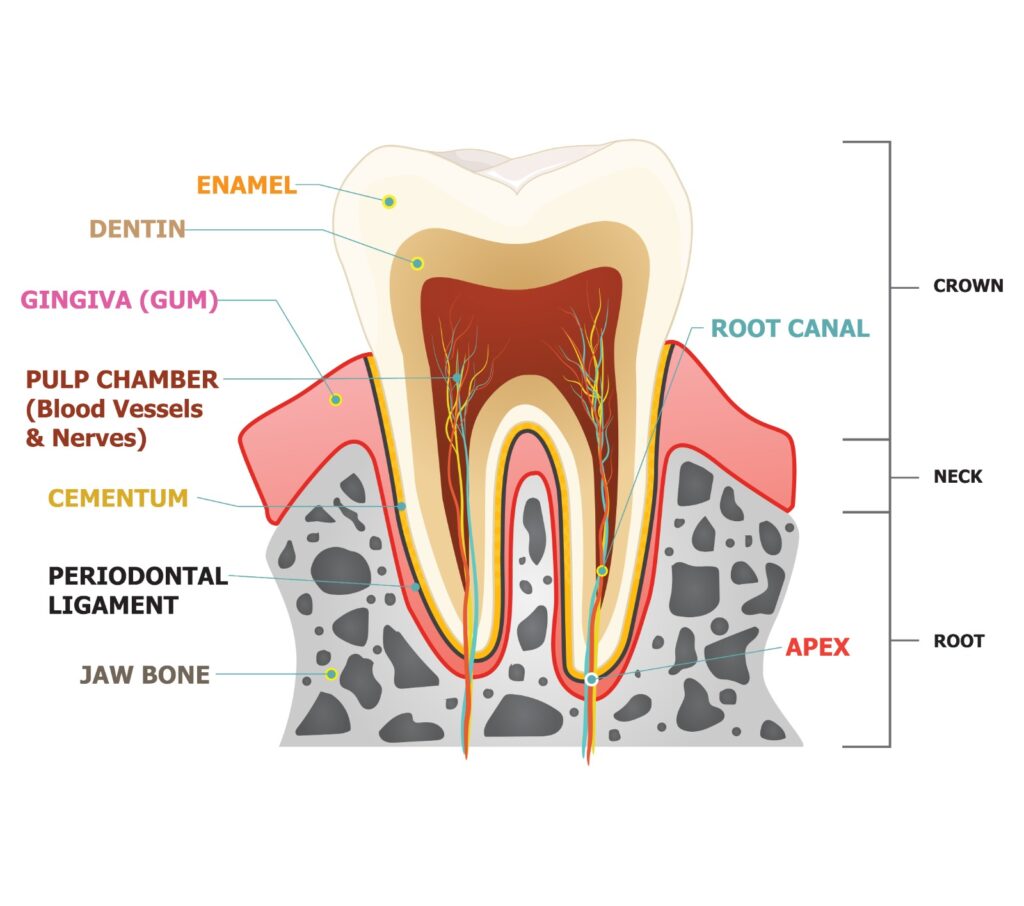Did you ever experience a sharp, pounding pain in your tooth? That pain could signal trouble. Indeed, a common culprit behind such discomfort is damage or infection in the inner pulp of the tooth. Consequently, this situation often necessitates a root canal procedure.
Understanding Root Canal
A root canal is a dental procedure to treat infection or damage within the tooth’s innermost part, known as the pulp
Why Would I Need It?
A Deep Cavity, if untreated, can burrow into the tooth’s pulp, causing inflammation and infection.
A Cracked or Chipped Tooth can expose the pulp to bacteria, leading to infection.
Multiple Dental Procedures on the same tooth can irritate the pulp, eventually causing its death and necessitating a root canal.
Dental Trauma, such as a blow to the face, can damage the pulp and require a root canal.
Signs You Might Need Root Canal
If you’re experiencing any of the following symptoms, it’s crucial to see your dentist.
Persistent toothache
Sensitivity to hot or cold temperatures
Swelling in the gums
Loose tooth
Pus coming from the tooth
Root Canal Procedure :
During the process, the dentist focuses on removing the infected pulp, and cleans the inside of the tooth, and sealing it to prevent recontamination.
Here’s a step-by-step process:
1. Examination and Diagnosis: The process begins with a thorough examination and X-rays to assess the extent of the damage and determine if the procedure is necessary.
2. Anaesthesia:Once the decision is made to proceed, local anaesthesia is administered to numb the tooth and surrounding area; consequently, the patient will not feel discomfort during the procedure.
Thez Dentist makes a small opening in the crown of the tooth to treat the pulp chamber.
3. Cleaning and Shaping: Using specialized instruments, the dentist carefully removes the infected or damaged pulp tissue from the inside of the tooth.
4. Filling and Sealing: Next, the canal is thoroughly cleaned, and is filled with a biocompatible material to seal and prevent future infection.
The opening in the crown is then sealed with a temporary or permanent filling.
5. Restoration: In some cases, a tooth that has undergone a root canal may require additional restoration, such as a dental crown, to strengthen and protect it from further damage.
To know more about the procedure, visit page
Recovery After Root Canal Procedure:
Following this procedure, patients are advised to take care of their teeth and gums to promote healing and prevent reinfection.
Which includes incorporating good oral hygiene, avoiding hard or sticky foods, and attending follow-up appointments as recommended by the dentist.
Conclusion:
If you’re experiencing any symptoms that suggest you might need a root canal, then don’t hesitate to schedule an appointment with your dentist for a proper diagnosis and treatment plan.
Root canals are one of the best dental procedures that can save a tooth from extraction and preserve your natural smile; therefore, they play a crucial role in maintaining your oral health.



